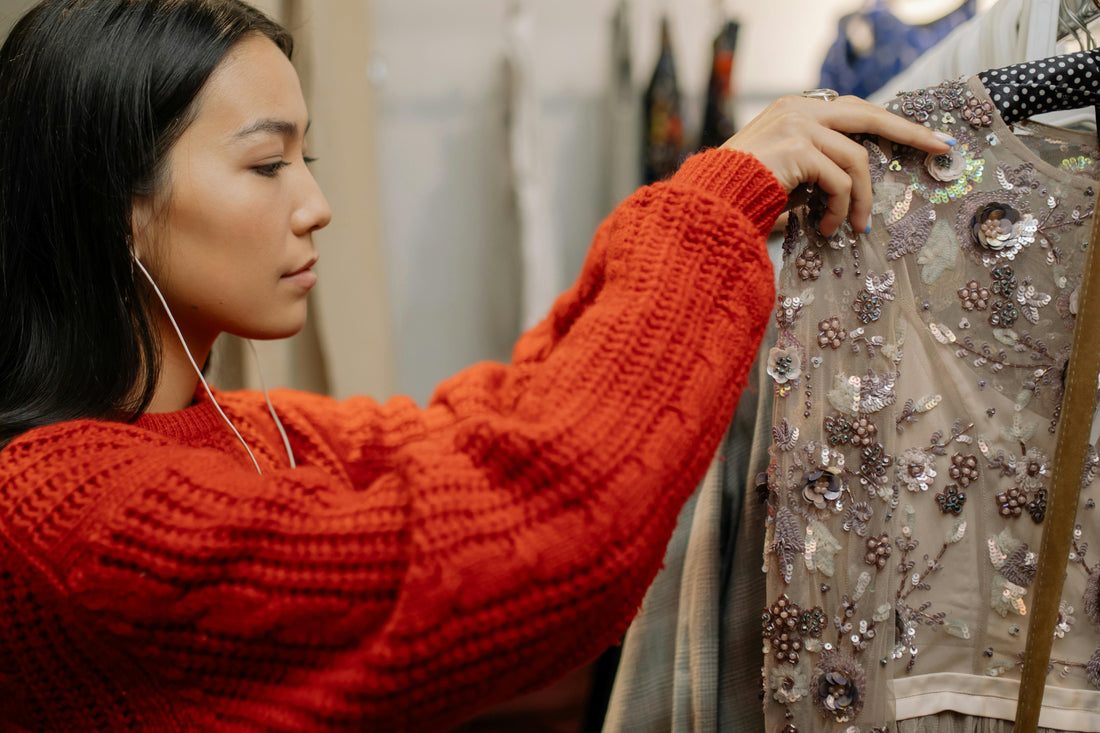
Sustainable Status Symbols: Why Conscious Consumers Are Choosing Quality Knitwear
Share
For years, luxury fashion was defined by visible logos, seasonal trends, and fast-changing collections. But in 2025, a quiet revolution is reshaping what it means to own something of value. Instead of flashy branding, conscious consumers are embracing quality, craftsmanship, and sustainability as the new indicators of style and success. At the forefront of this shift is knitwear—a category once associated with practicality that has now evolved into a powerful symbol of intentional living.
From Fast Fashion to Conscious Choices
The rise of sustainable fashion is driven by consumers who are increasingly aware of the environmental and social impact of their wardrobes. Fast fashion’s reputation for overproduction, textile waste, and poor labor practices has left shoppers questioning whether quick purchases are worth the hidden costs.
As a result, many are moving toward investment pieces—garments designed to last, made with natural fibers, and versatile enough to transcend seasons. Knitwear, particularly when crafted from sustainable materials, perfectly embodies this philosophy.
Why Knitwear Has Become a Sustainable Status Symbol
1. Quality Over Quantity
Knitwear made from natural fibers such as cashmere, alpaca, or organic cotton ages beautifully, often becoming softer and more characterful with time. Owning a few high-quality knits communicates discernment and restraint—values increasingly admired in today’s conscious consumer culture.
2. The Appeal of Craftsmanship
In an age of mass production, hand-finished details and artisanal techniques stand out. Cable-knit sweaters, ribbed cardigans, and textured knit dresses showcase design artistry that fast fashion cannot replicate. Wearing these pieces signals an appreciation for skill and heritage.
3. Durability and Longevity
Well-made knitwear can last for decades with proper care. This aligns with the growing movement toward wardrobes that prioritize longevity over seasonal turnover. Investing in a timeless knit piece is both practical and sustainable, reducing the cycle of overconsumption.
4. Quiet Luxury and Minimal Branding
The “quiet luxury” trend has replaced logos with subtle markers of quality. Knitwear naturally fits this ethos—its value lies not in branding but in fabric, fit, and finish. A minimalist cashmere sweater speaks volumes without needing to announce itself.
5. Versatility Across Lifestyles
Unlike trend-driven clothing, knitwear adapts seamlessly to different lifestyles. A fine-knit dress transitions from office to evening, while an oversized cardigan works for both casual weekends and travel. Versatility enhances sustainability, as one garment fulfills multiple roles.
The Role of Sustainability in Knitwear
Knitwear’s growing status is also tied to its sustainability potential. Brands are increasingly offering pieces crafted from recycled yarns, organic cotton, or responsibly sourced wools. Consumers are seeking out certifications, transparency, and traceable supply chains, signaling a shift toward accountability.
Some key sustainable knitwear practices include:
-
Natural and Organic Fibers: Reduced reliance on synthetic materials that shed microplastics.
-
Slow Fashion Production: Smaller batch production that values quality over volume.
-
Recyclability: Knits designed to be re-used or recycled at the end of their lifecycle.
-
Fair Labor Practices: Support for artisanal communities and ethical manufacturing.
Styling Quality Knitwear as a Status Piece
High-quality knitwear isn’t just about sustainability—it also makes a statement when styled with intention. Here’s how conscious consumers are wearing knitwear as modern status symbols:
-
Minimalist Monochromes: Pairing a neutral cashmere sweater with tailored trousers for timeless elegance.
-
Layered Textures: Mixing knits with leather, silk, or denim to highlight craftsmanship and contrast.
-
Capsule Wardrobe Staples: Investing in a few versatile knits that form the backbone of an intentional wardrobe.
-
Effortless Travel Style: Lightweight knit dresses or cardigans as go-to pieces for chic, sustainable travel.
-
Everyday Luxury: Wearing knitwear not just on special occasions but as daily staples reflects confidence in personal style.
Designers and Brands Elevating Knitwear
Luxury houses and sustainable fashion labels alike are spotlighting knitwear in their collections. From handcrafted sweaters with artisanal techniques to minimalist knit dresses designed for longevity, these pieces are positioned as investments rather than impulse buys.
Independent brands are also gaining traction by offering traceable, eco-friendly knitwear with full transparency about materials and production. For boutiques and retailers, highlighting quality knitwear in curated collections is a powerful way to meet the rising demand for sustainable luxury.
Why Consumers Value Knitwear as Status Today
Unlike traditional luxury markers, knitwear as a sustainable status symbol aligns with modern values:
-
It prioritizes authenticity over excess.
-
It celebrates craftsmanship and heritage rather than mass production.
-
It reflects a commitment to responsibility and conscious living.
-
It offers comfort and versatility without sacrificing elegance.
In short, knitwear represents a new kind of luxury—one that is quieter, smarter, and deeply personal.
Final Thoughts
The era of conspicuous consumption is fading, replaced by a movement that celebrates quality, sustainability, and timeless style. Knitwear, with its unique ability to combine craftsmanship, durability, and elegance, has emerged as the ultimate sustainable status symbol.
For conscious consumers, choosing knitwear isn’t just about what looks good—it’s about what lasts, what feels authentic, and what aligns with a more thoughtful way of living. In 2025 and beyond, a well-made sweater or knit dress says more than a logo ever could.
